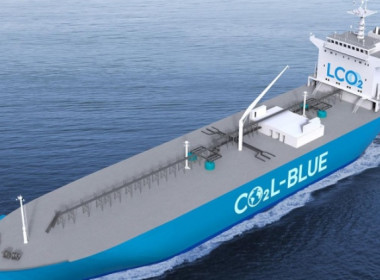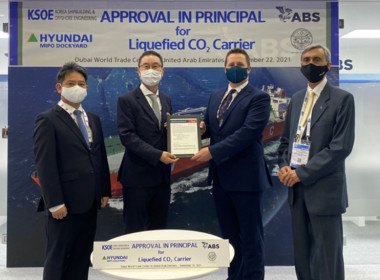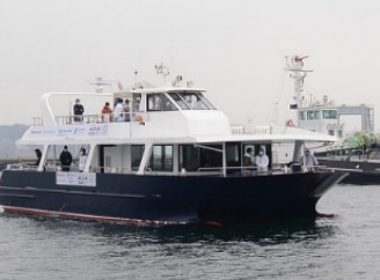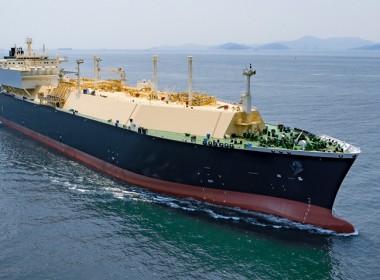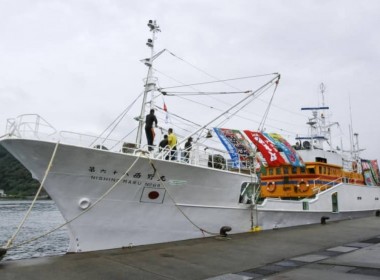VESSEL REVIEW | Excool – Japanese partnership delivers liquefied CO2 carrier demonstrator

Japan’s Mitsubishi Heavy Industries (MHI), via its Mitsubishi Shipbuilding business unit, has handed over a new liquefied carbon dioxide (LCO2) carrier to Kobe-based shipowner Sanya Kisen Kaisha.
Excool was developed as a demonstration test vessel for the transport of LCO2. The ship will be used for the CCUS R&D and Demonstration Related Project/Large-scale CCUS Demonstration in Tomakomai/Demonstration Project on CO2 Transportation being conducted by Japan’s New Energy and Industrial Technology Development Organisation (NEDO).
Although CO2 capture, utilisation and storage (CCUS) is becoming more feasible as a means of helping achieve carbon-neutrality, the sources of CO2 emissions are often located far from the sites that have been selected for carbon utilisation or storage. Hence, MHI expects there will be a growing demand for LCO2 carriers able to transport such cargo safely and economically. MHI used its prior experience in manufacturing liquefied gas carriers, particularly LPG and LNG carriers, to design and build the demonstration test ship, whereas the cargo containment system that consists of tanks and handling equipment was developed by the Engineering Advancement Association of Japan (ENAA). The cargo tank system received approval in principle from Bureau Veritas in September 2021.
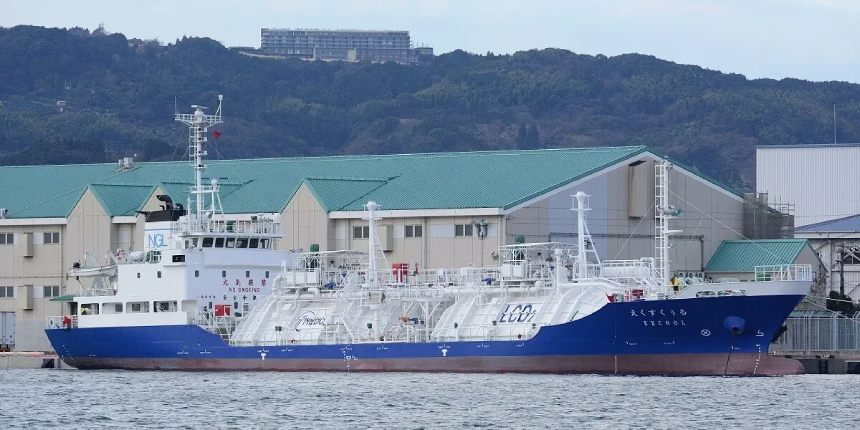
Excool will be chartered by Nippon Gas Line, which is jointly conducting the NEDO project, to collect and analyse operational data through CO2 transportation demonstration tests. In addition, Kawasaki Kisen Kaisha (K Line) and Ochanomizu University will be commissioned by ENAA as subcontractors to conduct safety assessments of LCO2 transportation operations, along with research and development for the ship’s LCO2 pressure control and stability, as well as develop and demonstrate technologies for safe and low-cost CO2 transport.
The new gas carrier has an LOA of 72 metres, a beam of 12.5 metres, a maximum draught of 4.55 metres, a deadweight tonnage of 1,290, and two cargo tanks with a combined capacity of 1,450 cubic metres. MHI claims the vessel is the first LCO2 carrier developed specifically to support CCUS, whereas earlier LCO2 carriers built and operated in Japan and Europe transported liquefied gas for the food industry.
According to the Japanese Ministry of Economy, Trade and Industry, plans are for Excool to commence trials involving the transport of LCO2 between the Maizuru Power Station in Kyoto Prefecture to a carbon capture and storage testing facility in Hokkaido. The ministry said the trials will be the first time in the world that LCO2 will be shipped at a temperature of –50 degrees Celsius, thereby providing a safe and cost-effective transport of LCO2 in large volumes and over long distances.
The long-term objective of the project is to enable transport of CO2 that has been liquefied and captured in Japan to dedicated storage facilities overseas. The ship will be used to verify the techniques for transporting and handling LCO2 in tanks under different transport conditions, with the aim of establishing optimal CO2 marine transport technology while also considering factors such as economic efficiency, safety, and environmental impact.
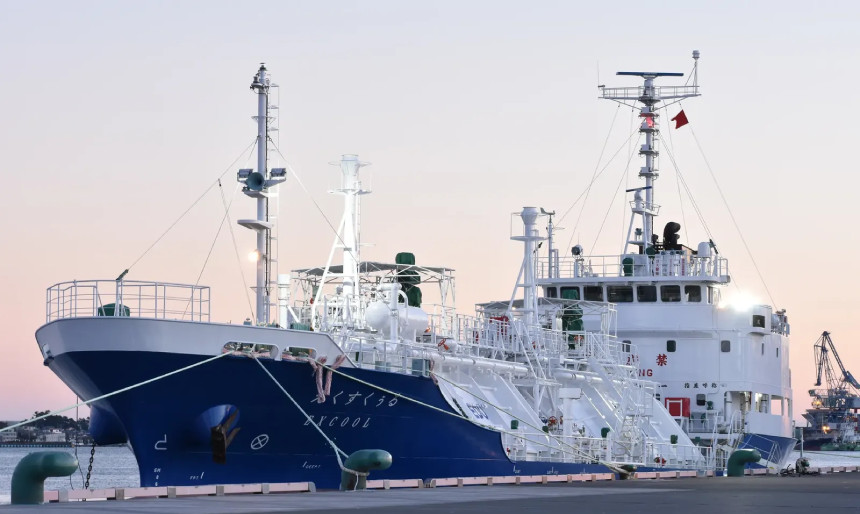
| Excool | |
| SPECIFICATIONS | |
| Type of vessel: | LCO2 carrier |
| Flag: | Japan |
| Owner: | Sanya Kisen Kaisha, Japan |
| Builder: | Mitsubishi Shipbuilding, Japan |
| Length overall: | 72 metres |
| Beam: | 12.5 metres |
| Draught: | 4.55 metres |
| Deadweight tonnage: | 1,290 |
| Capacity: | 1,450 cubic metres |
| Other equipment installed: | Engineering Advancement Association of Japan cargo tanks |


